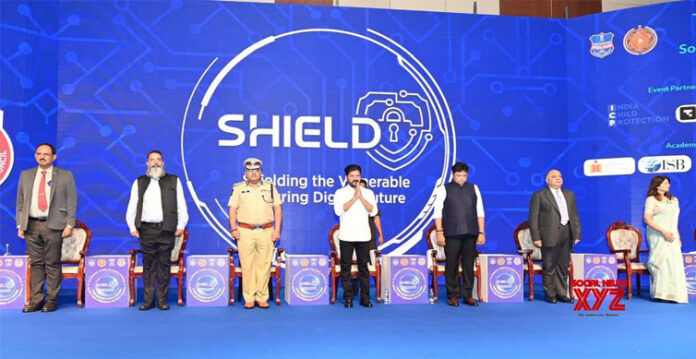The future of cybersecurity was the focus of heated discussions at The SHIELD 2025, Telangana’s premier cybersecurity conclave held where experts examined the rising threats and the role of Artificial Intelligence (AI) in protecting digital landscapes.
P Krishna Sastry, Partner in Cyber Security at Ernst & Young LLP, spoke on the growing challenge of cyberattacks, with 85 percent of all cyberattacks now stemming from phishing attempts and nearly 8.9 lakh new malware threats emerging every day. According to Sastry, AI is currently used to prevent such attacks and has already shown promising results in detecting threats. However, he emphasized that the real game-changer lies in AI’s ability to predict these attacks before they even occur.
“AI will soon help predict cyberattacks, not just prevent them,” Sastry said, as he outlined the critical role AI is playing in cybersecurity. He explained that cybersecurity efforts are built on five pillars: preventive control, protective control, detective control, responsive control, and predictive control. AI’s primary role so far has been in preventive and protective measures, with its use in detective controls being more limited. However, he pointed out that AI will evolve to tackle all five areas, including predictive controls, enabling the anticipation of threats before they materialize.
Also Read: The Vital Role of Reading and Writing in the Age of Artificial Intelligence
While AI is automating numerous processes in cybersecurity, Sastry reassured the audience that AI would not replace human involvement entirely. “Human expertise will always be needed, and not all AI models will work in every cybersecurity scenario,” he stated.
Further, Sastry highlighted advancements in AI-enabled firewalls, which are now more efficient at detecting and combating malware. “Out of the 8.9 lakh new malware threats, only 2 percent are new and unknown strains. AI is now critical in detecting these emerging threats,” he explained. Additionally, he touched upon the development of a security orchestral platform that enhances the detection of cyber threats.
The discussions also included viewpoints from other notable experts in the field. Krishna CV Grandhi, Senior Advocate, underscored the need for adaptable AI solutions rather than a “one-size-fits-all” approach. He stressed the importance of explainability in AI regulations and called for more comprehensive frameworks that incorporate algorithm accountability.
In the same session, Sharat Kavu Raj, Inspector General of Police from Rajasthan Police, raised concerns about the growing threat of AI-generated deepfakes, which are becoming increasingly realistic. “AI can simulate voices and create convincing fake images and videos, posing significant challenges for law enforcement and cybersecurity efforts,” he warned, adding that the future of AI-driven cyberattacks is only beginning to take shape.
Sunil Bajpai, Chief Trust Officer at Tania, highlighted the role of deception in cybersecurity, pointing out that while deepfakes are a new concern, fraudulent tactics have existed long before AI’s rise. He argued that AI could be leveraged effectively to detect such frauds, provided there is better collaboration between technology developers, regulators, and policymakers.
The panelists at SHIELD 2025 unanimously agreed that AI has immense potential to reshape cybersecurity, but they also cautioned that its development needs to be handled with care. The future of AI in this sector will depend not only on technological advancements but also on creating regulatory frameworks that ensure accountability, transparency, and adaptability to new challenges.
As AI continues to evolve, its role in predicting and preventing cyberattacks is poised to become a critical pillar in the defense against ever-growing digital threats.
(This story is sourced from a third-party syndicated feed. Raavi Media takes no responsibility or liability of any nature. Raavi Media management/ythisnews.com can alter or delete the content without notice for any reason.)


